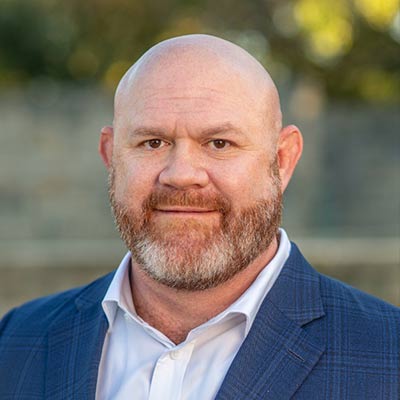Introduction
The CrowdStrike outage in July 2024 highlighted significant deficiencies in cybersecurity practices and internal procedures across many organizations. Proper cybersecurity measures, coupled with adequate funding and robust business continuity plans, could have prevented or minimized the impact of such incidents. Unfortunately, a lack of investment in these areas contributed to the severity of the outage and its aftermath.
Key Cybersecurity Practices
In the wake of the outage, cybercriminals exploited the situation by launching malicious websites and distributing unofficial code. These fraudulent resources posed substantial risks, such as data theft, financial loss, and further system compromises. Cybersecurity authorities stressed the importance of seeking assistance only from official channels to avoid falling victim to these scams (Devdiscourse).
1. Rigorous Testing and Quality Assurance
- Comprehensive Testing: Many organizations had not implemented comprehensive testing protocols, relying too heavily on automated testing rather than including manual tests on real hardware configurations. This oversight allowed the coding error to go unnoticed (WinBuzzer) (Help Net Security).
- Staged Deployment: The absence of a phased rollout approach meant that the faulty update affected millions of devices simultaneously, exacerbating the issue (CIS).
2. Change Management Processes
- Lack of Formal Change Control: Without a formal Change Control Board (CCB), the potential impacts of changes were not thoroughly evaluated, leading to hasty deployments without adequate risk assessment (Computer Weekly).
- Inadequate Documentation: Many companies lacked clear documentation and procedures for managing updates, slowing down the resolution process and increasing downtime (CIS).
3. Vulnerability Management
- Irregular Audits: Irregular security audits and vulnerability assessments left systems vulnerable to such incidents, as weaknesses were not identified and addressed proactively (Help Net Security).
- Patch Management Failures: Organizations struggled to manage patches effectively, leading to either delayed updates or rushed implementations that skipped critical validation steps (Help Net Security) (Computer Weekly).
4. User Awareness and Training
- Insufficient Training: Lack of regular training left IT staff and end-users ill-prepared to respond quickly and effectively during the incident (CIS).
Business Continuity Planning
1. Inadequate Risk Assessment and Business Impact Analysis (BIA)
- Failure to Identify Critical Systems: Companies often did not prioritize protection and recovery for essential systems, leading to prolonged disruptions (CIS) (Computer Weekly).
- Overlooked Threat Analysis: Without thorough threat analysis, businesses were unprepared for the widespread impact of the outage.
2. Insufficient Incident Response Planning:
- Undefined Roles: During the outage, many organizations lacked clearly defined roles and responsibilities, resulting in confusion and delays in response efforts (Help Net Security).
- Poor Communication: Communication plans were often insufficient, causing breakdowns in information flow between employees, stakeholders, and customers (CIS).
3. Lack of Disaster Recovery Planning
- Inadequate Data Backup: Many organizations did not have regular backup processes or had not tested recovery procedures, leading to data loss and extended recovery times (Computer Weekly).
- No Alternative Solutions: Without alternative processes or manual workarounds, companies struggled to maintain operations during digital system failures (Help Net Security).
4. Lack of Continuous Improvement
- No Post-Incident Review: Companies often did not conduct thorough reviews after incidents, missing opportunities to learn and improve their defenses (CIS).
- Stagnant Plans: Continuity and disaster recovery plans were frequently outdated, failing to address new threats and business changes (Help Net Security).
Impact of Insufficient Investment
A significant factor contributing to these vulnerabilities was the underfunding of cybersecurity departments. Many organizations had not invested adequately in their cybersecurity infrastructure, leading to outdated technology, insufficient staffing, and lack of training (Computer Weekly) (Help Net Security). This lack of investment left companies ill-equipped to handle the complexities of modern cyber threats and the rapid pace of technological change.
Impact of Insufficient Investment
The CrowdStrike outage served as a wake-up call for organizations to reassess their cybersecurity investments and practices. Proper funding, comprehensive testing, and robust continuity plans are essential to safeguarding against such incidents and ensuring business resilience. By learning from this event, companies can strengthen their defenses and reduce the impact of future disruptions.
Get in touch with us
Secutor Cybersecurity is a trusted partner comprised of industry leading experts in the fields of Cybersecurity and Governance, Risk and Compliance. We partner with our clients to deliver on-demand solutions tailored to expertly navigate the regulatory demands of their specific industries.
Our proven track record of successfully exceeding client expectations is achieved through the combination of our methodical approach, advanced technologies, subject matter experts, and synergy with client team members.
Secutor is your team of world-class problem solvers with vast expertise and experience delivering complete solutions keeping your organization protected, audit-ready, and running smoothly.







